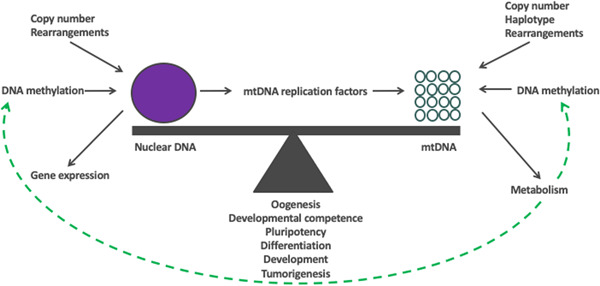Figure 4.

Genomic balance. At key stages in development, a cell strikes a balance between its two genomes in order that it can progress to the next stage of development. This process is mediated by the constant exchange of regulatory information between the nucleus and the mitochondrial genome. This ensures that the cell at any given stage acquires sufficient copies of mtDNA in order that the cell can undertake its specialized function using as much or as little ATP derived through OXPHOS. At the same time, the nuclear genome contributes to genomic balance through epigenetic changes by altering, for example, the levels of DNA methylation, that control gene expression. Other factors include DNA rearrangements, such as mutations and deletions, and copy number variants that will have an impact on phenotype. The mitochondrial genome will contribute through the levels of mtDNA copy number available that will influence the means of cellular metabolism available to the cell, which, is also influenced by the cell's mtDNA haplotype. This results in metabolic factors being released that regulate DNA methylation and other epigenetic modifiers, which act on both the nuclear and mitochondrial genomes. mtDNA, mitochondrial DNA; OXPHOS, oxidative phosphorylation.
